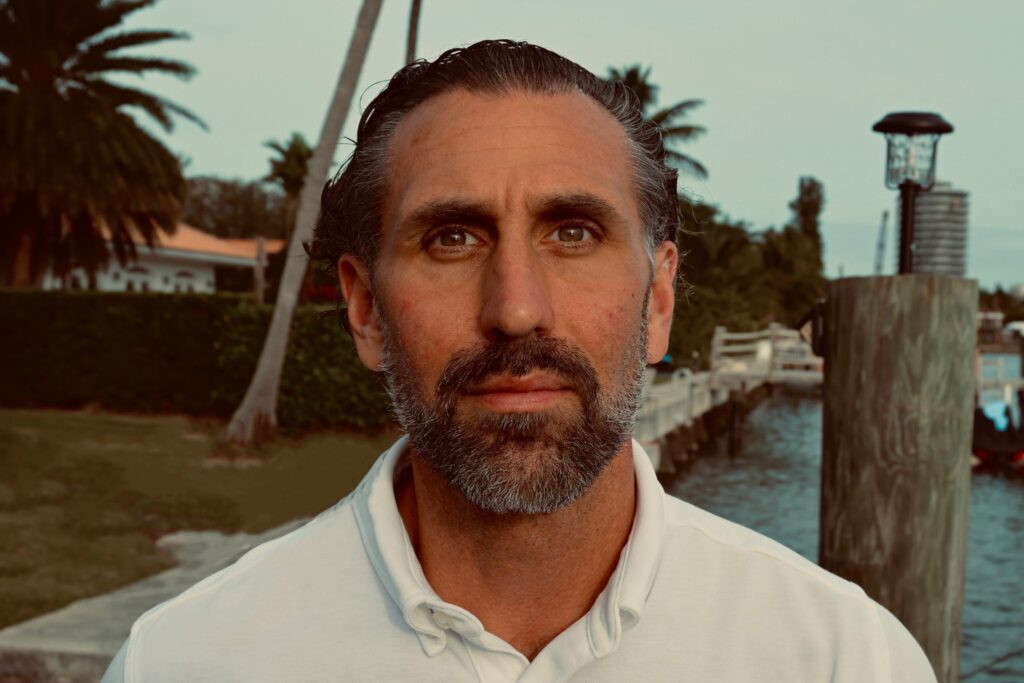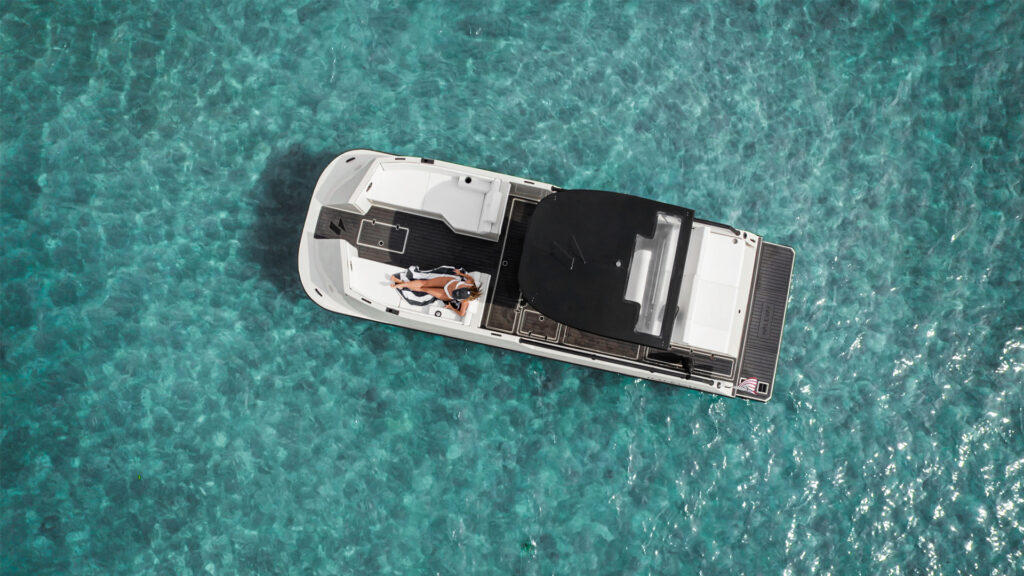By Paris Santiago, FAU Center for Environmental Studies
The following Q&A was conducted with Frank Heidinger, founder and CEO of Halevai. The Miami-based company designs and builds fully electric-powered recreational boats. This interview has been edited for length and clarity.
Where did the idea for Halevai begin?

A combination of things happened over time. I was working for an organization for about 10 years, and we did a large-scale plastic pollution project, which was to aggregate much of this ocean plastic and turn it into a more valuable long-term material. … From being on these gas-powered boats, you’re thinking, “We’re finding a solution for one big problem that we’ve created, but we’re also contributing to another.” Although recreational boating is less than 1% of all the carbon we talk about, it is a changeable resource and one that I think is important to talk about.
The second stage was looking at material. … When I was thinking about material, I’m thinking how fundamentally, boats are made out of fiberglass because it’s the best possible material used today. Some boats are made out of aluminum, but they get expensive and they’re usually for municipality purposes.
The combination of thinking about powering small watercraft, but also thinking at the same time: “Are they made with the best materials?” … Thinking about if fiberglass is going to be the most ideal in the material in 20-30 years, and I don’t think it is. I think there are going to be materials that are going to replace fiberglass in the supply chain. It’s going to take a generation or two to replace. Both of those key indicators caused us to start doing more research and putting together a team and ultimately starting our company.
What makes an electrified boat different than a typical boat?
The simplest version of that answer is that there are a few working parts. Therefore, there are fewer parts to function and break.
If you’ve ever spent any time around a marina or people who love to recreate on their boats, they’re always complaining that something’s not working. … There are a couple thousand parts in a typical motor assembly. We have fewer than 2,000 parts in our entire boat. Just in manufacturing and maintenance, that is the major difference.
What are some of the climate benefits for electrifying boats?

… Obviously the U.S. grid is not at 100% renewable (energy). It’s around 13% renewable, which means that 13% of all the power you use to charge your iPhone, your electric car, or the air conditioning in South Florida,13% of that energy is coming from a renewable resource and 87% of the energy is coming from a non-renewable power such as natural gas or coal.
As our grid becomes more renewable, which it will … every time you use your vehicle, you are playing a role in mitigating direct carbon effects. That’ll never be the case with gas. No matter how smart traditional gas motor systems become, they’ll never be able to match the ever-growing grid.
So that’s, I think, the most important thing. … Every time you charge it, you’re part of an ever-growing impact that is working towards these international goals. You do nothing different other than rather than going to the marina and getting gas, you just plug into your dock. But every time, every hour you’re doing that, you’re part of a solution. We start to accumulate that, and these incremental changes at scale have a rather larger impact.
What are some of the future goals for Halevai?
Our future goals are to make customers happy. That is always the first goal with any young company, especially one that’s working with an emerging technology where you are taking people from a traditional experience … to a new one. It’s important to focus on customer satisfaction, really, and hear your customers and try to deliver them the best possible product you can build that they will then enjoy.
Second is long term … (We are) working with organizations to explore new material that can be applied to boating. … We have spent three years developing technologies that are very strong, high-performance, robust and valuable to the customers. We now have to think about what are the materials that can replace the ones that are not renewable.
For us, each component of our build will be analyzed, reevaluated and hopefully over time be replaced with a better, more renewable material.
You discussed your future goals for the company, but what kind of future do you envision for the electric boat industry as a whole in Florida?
Florida is a good place to start because it has year-round boating. So, if you are going to go renewable, they’re going to have a bigger impact than you’re going to have in any other state.
The second part is I think we’re going to see an adoption of short-range replacements (for gas-powered boats) in Florida and other places, then you’re going to see a new hybrid versions of propulsion for longer-range vehicles. The technology for electrical power over long distances just does not exist yet. I think we’re also going to see short-range, low-speed services such as point-to-point transports that are going to become electric.
We can go fast and we can do it efficiently, but when you don’t need to go fast, it’s a different haul style, which allows you more passengers and to go slower. Electric is really efficient at those ranges. The challenge with electric propulsion has always been once you get into the high-performance category and start really moving fast, you burn those batteries rather quickly, so how do you how do you keep that power on? ….
You’ll see new categories of companies like ours that are going to replace existing profiles of gas because it just makes more sense. The market is easier, it’s cheaper, and a lot easier to maintain. You’re going to see hybrid segments on a long haul, and you’re going to see a lot of companies come in and start to electrify low-performance, point-to-point services.
This Q&A was conducted by Paris Santiago, a graduate research assistant at Florida Atlantic University who is pursuing a master’s degree in the environmental science program. She has worked as a research assistant for FAU’s Center for Environmental Studies since 2022. The center manages The Invading Sea.
Sign up for The Invading Sea newsletter by visiting here. If you are interested in submitting an opinion piece to The Invading Sea, email Editor Nathan Crabbe at ncrabbe@fau.edu.



